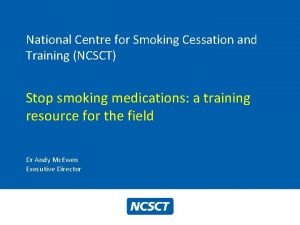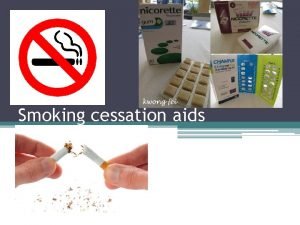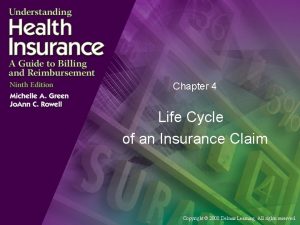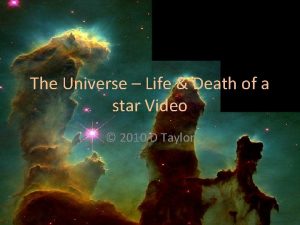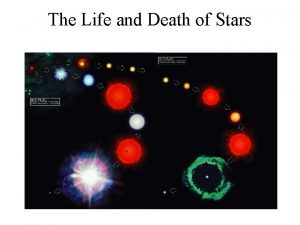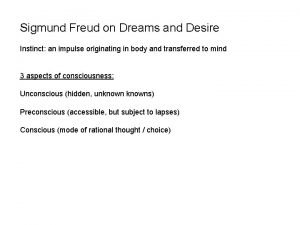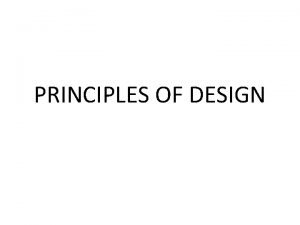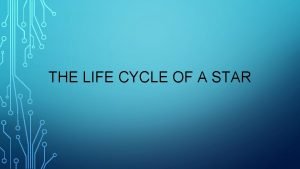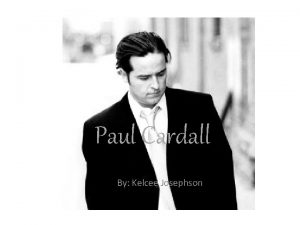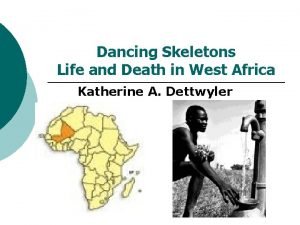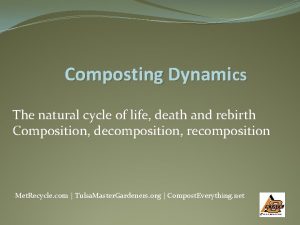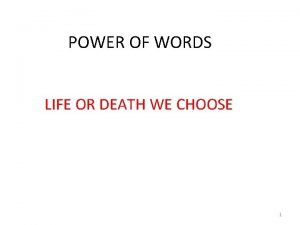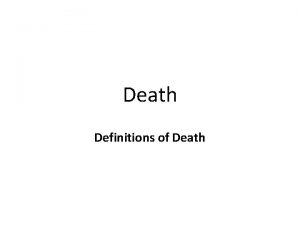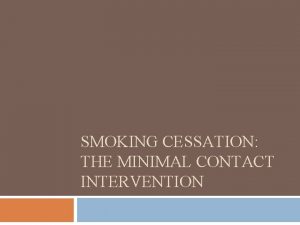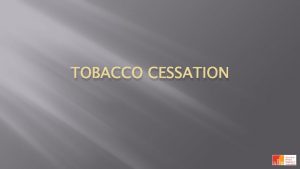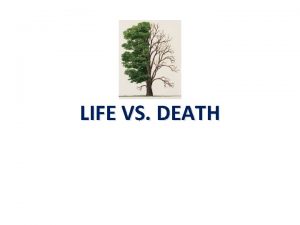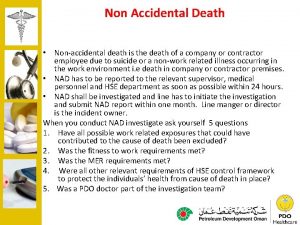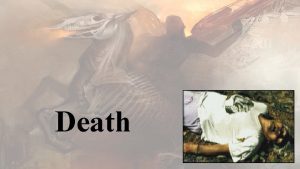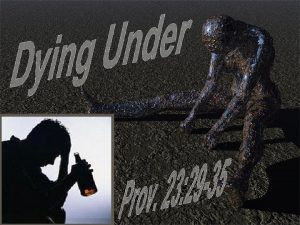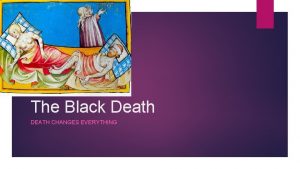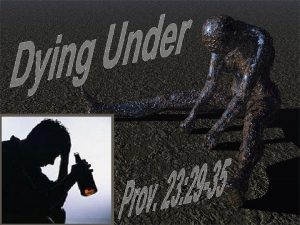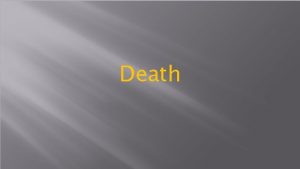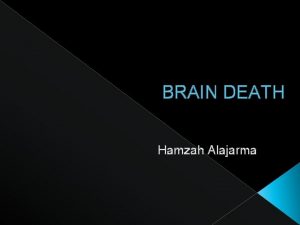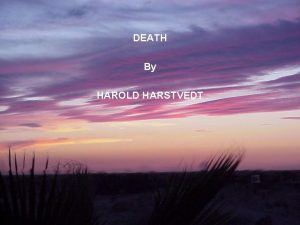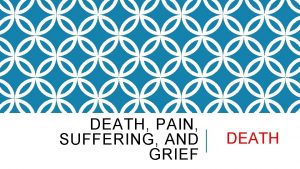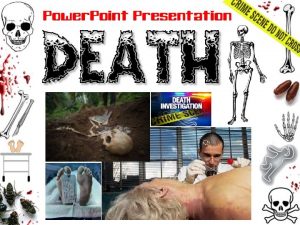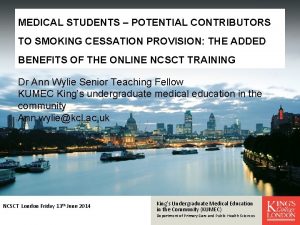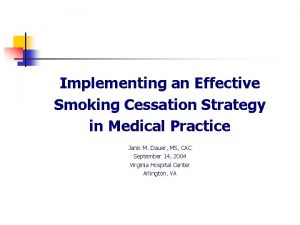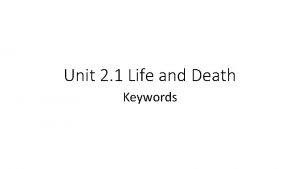Medical Aspects of Death Death Cessation of life































- Slides: 31

Medical Aspects of Death

Death • • • Cessation of life Is it event or process When does death actually occur? “Cellular Death” “Somatic Death”

Cellular Death • Cessation of Respiration • Followed by autolysis – Skin, bone: remain active for hours – WBC: can move 12 hours after cardiac arrest – Neurons: 3 -7 minutes

Somatic Death • Individual will never communicate with the environment • Irreversible • “True” Death

Resuscitation • Results of resuscitation – Recovery of consciousness and breathing – Not conscious , but can breathe – Not conscious, and Cannot breathe without mechanical ventilator

Brain Death

Code of Practice concerning Brain Death in UK (1970) • Deep coma (excluding treatable causes) • Need of mechanical ventilator • Firm diagnosis of pathology and brain damage • Tests for brain stem death must be positive

Code of Practice concerning Brain Death in UK (1970) • Absent cerebral function • Absent brain stem function • Apnea

Code of Practice concerning Brain Death in UK (1970) • Cerebral Cortex: – Cognition – Voluntary movement – Sensation

Code of Practice concerning Brain Death in UK (1970) • Mid brain – Cranial nerve III • Pupillary function • Eye movement • Pons – Cranial nerve IV, V, VI • Conjugate eye movement • Corneal reflex • Medulla – Cranial nerve IX, X • Gag reflex • Cough reflex – Respiration

Clinical Tests • Brain stem reflexes are absent with fixed dilated unreactive pupils • No motor response to painful stimuli to any cranial nerves • No gag reflex • No respiratory movement • Test performed in >35 degrees temperature


Causes of Brain Death • • • Cerebral anoxia Cerebral hemorrhage Subarachnoid hemorrhage Trauma Meningitis





Persistent Vegetative State

Persistent Vegetative State • Long term survival of unconscious but spontaneously respiring patient • There is some brain stem activity • No higher cerebral function • Medical treatment can be withdrawn • ? ? Withdraw nutrition and hydration

Death Certificate

Example of Death Certificate

Questions need answers • • Who is the deceased? When & Where did death occur? How did he/she died? Cause and Manner of Death? • If we can answer the questions we can sign the Death certificate!

Death Certificate • Cause of Death • Manner of Death

Death Certificate • Cause of Death – Part I: Conditions that led directly to death –A – B due to: – C due to – Part II: Other conditions (may contribute to death)

Death Certificate • Is this Correct? ! • Death certificate written: – Cause of death: • Cardio-respiratory arrest – Cause of death: • Old age – Cause of death: • Heart failure

Death Certificate • Manner of Death: – Natural – Homicide – Suicide – Accidental – undetermined

Medico legal investigation • If death is natural and the doctor can sign death certificate, no investigation needed. • If death certificate cannot be singed, we usually need medico legal investigation

Why cannot sign death certificate • • • Unnatural death Homicide Suspicious Traumatic Violence Neglect Poisoning Unexpected unexplained accidental

Exercise: • 56 year old man is diagnosed to have pancreatic cancer. He is admitted to hospital for surgical resection. While in the hospital the patient develops DVT in the deep vein of legs. The next day, the condition is complicated by pulmonary thromboembolism. He dies few hours later. • How do you write the Cause of Death?

Exercise: • Following a car accident a young male patient, 24 years old develops head injury. He is found to have subarachnoid hemorrhage. He develops pneumonia and dies few days late. • He is also HIV positive. • How do you write the cause of Death?

Home work • Define death, and somatic death • Discuss the meaning of “cause of death” in forensic setting • List, define and understand the implications of different “manners of death” • List the criteria of brain death, persistent vegetative state • Discuss the implications and the treatment options in cases of brain death and persistent vegetative state
 Life cycle of a blowfly
Life cycle of a blowfly Smoking cessation learning objectives
Smoking cessation learning objectives 5 as smoking cessation flow chart
5 as smoking cessation flow chart Driving cessation definition
Driving cessation definition Ncsct smoking cessation
Ncsct smoking cessation Smoking cessation learning objectives
Smoking cessation learning objectives Palmer hayden
Palmer hayden California medical license application
California medical license application Greater baltimore medical center medical records
Greater baltimore medical center medical records Hepburn osteometric board
Hepburn osteometric board Torrance memorial human resources
Torrance memorial human resources Cartersville medical center medical records
Cartersville medical center medical records Somatic and molecular death
Somatic and molecular death Claim life cycle insurance
Claim life cycle insurance Where does joshua barnes think they come from
Where does joshua barnes think they come from The life and death of stars
The life and death of stars Life and death instinct freud
Life and death instinct freud Ibrahim family tree
Ibrahim family tree Unity meaning in art
Unity meaning in art No guilt in life no fear in death lyrics
No guilt in life no fear in death lyrics Fossil assemblages
Fossil assemblages In life and in death we belong to god
In life and in death we belong to god Star life cycle from birth to death
Star life cycle from birth to death Star life cycle from birth to death
Star life cycle from birth to death Star life cycle from birth to death
Star life cycle from birth to death Paul cardall first wife
Paul cardall first wife Allah gives life and death
Allah gives life and death Hope in christ alone
Hope in christ alone Dancing skeletons life and death in west africa
Dancing skeletons life and death in west africa What do muslims believe in
What do muslims believe in Natural cycle of life and death
Natural cycle of life and death Words have the power of life and death
Words have the power of life and death




